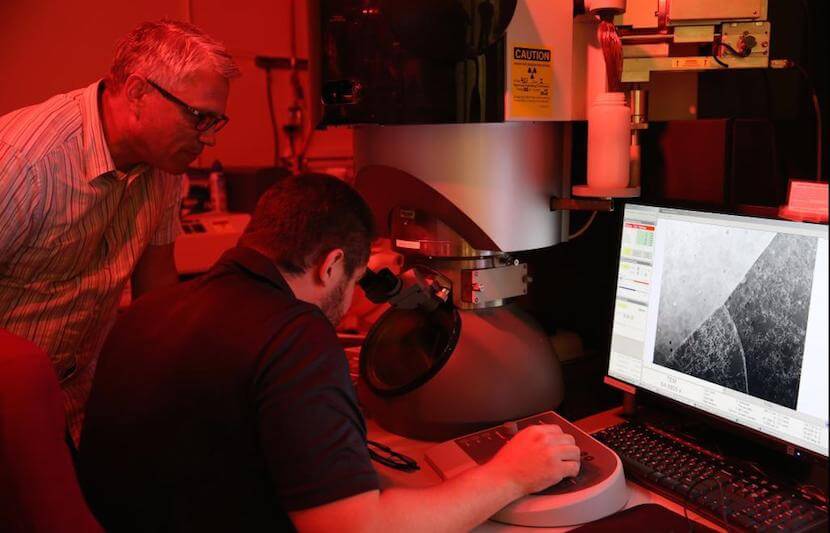A team of researchers from Lawrence Livermore National Laboratory (LLNL), Ames National Laboratory, Georgia Tech University, and Oregon State University has developed a breakthrough method to 3D print strong and ductile stainless steel.
The researchers effectively produced one of the most commonly used marine grade stainless steels, a low-carbon type called 316L.
The research is published in the journal Nature Materials.
Earlier research showed that materials created through 3D printing often had poor mechanical performance compared to materials produced by other manufacturing methods, said LLNL materials scientist and lead author Morris Wang.
This is “due to intrinsic pores and defects trapped during the additive manufacturing processes,” said Wang.
The team’s intent was to ensure that the performance of 3D-printed materials is equal to or better than the same material made by other manufacturing methods, said Wang.
In this study, the researchers were able to accomplish that goal.
“Our research demonstrates that we can print both strong and ductile stainless steels, whose performance is actually better than the same material made by other manufacturing methods,” said Wang.

This research could lead to the widespread 3D printing of stainless steel components in the aerospace, automotive, and oil and gas industries, where strong and tough materials are needed to tolerate extreme force in harsh environments, Wang said in a statement.
To ensure that 3D-printed 316L stainless steel would meet or surpass performance methods tested in traditionally produced 316L, the team had to limit the porosity caused during the fusion of metal powders.
The team limited the fragility and optimized the density of the 3D-printed stainless steel through experiments and computer modeling as well as altering the material’s microstructure.
“This microstructure we developed breaks the traditional strength-ductility tradeoff barrier,” Wang said in a statement.
“For steel, you want to make it stronger, but you lose ductility essentially; you can’t have both. But with 3D printing, we’re able to move this boundary beyond the current tradeoff.”
The team printed thin plates of stainless steel 316L using two different laser powder bed fusion machines. This technique created cell-like structures that could be used to alter and improve mechanical properties, researchers said in a statement.
“When you additively manufacture 316L it creates an interesting grain structure, sort of like a stained-glass window,” LLNL scientist Alex Hamza said in a statement.
“The grains are not very small, but the cellular structures and other defects inside the grains that are commonly seen in welding seem to be controlling the properties. This was the discovery.”
This same approach to 3D printing could stem the development of additional engineering materials such as titanium alloys or magnesium alloys, said Wang.
LLNL postdoc researcher Thomas Voisin, a key contributor to the paper, believes this research could provide a new understanding on structure-property relationships in 3D-printed materials.
“Deformation of metals is mainly controlled by how nanoscale defects move and interact in the microstructure,” Voisin said in a statement.
“Interestingly, we found that this cellular structure acts such as a filter, allowing some defects to move freely and thus provide the necessary ductility while blocking some others to provide the strength. Observing these mechanisms and understanding their complexity now allows us to think of new ways to control the mechanical properties of these 3D printed materials.”
Traditionally, 3D printing has not produced efficient performance in metals in alloys. “In fact, perhaps over 90 percent of alloys in use currently cannot be 3D printed,” Wang said.
The team’s end goal is “to demonstrate that 3D-printed metal components have performance that is substantially better than the current components that are already in use,” Wang said.
“This is going to push the additive manufacturing to another level.”
During this multi-year research, the Ames Lab contributed by conducting X-ray diffraction to further understand material performance, Georgia Tech researchers constructed modeling to determine how 316L could have high strength and ductility, and Oregon State researchers performed analysis on composition and characterization.



